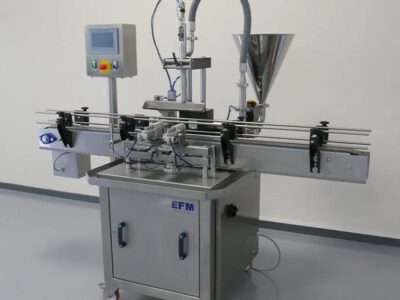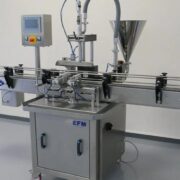To promote workplace safety and keep people safe, the Occupational Safety and Health Administration (OSHA) continually revises rules and disseminates new risk information. Every year, they provide information on common infractions and fatality statistics from a variety of industries. One of their main concerns is “The Fatal Four.”
Although the name seems like a death metal band, this list is about the four most prevalent causes of fatalities in the construction business. It comes as no surprise that the profession with the most deaths and infractions has its own OSHA list.
Examining these hazards can make employees and supervisors more aware of the importance of protecting themselves and their colleagues or anyone else who might be on the site. The most efficient strategy to minimize deaths is to acquire enough training and attend Hard Hat Training’s OSHA compliance courses. Supervisors can guarantee that their staff is prepared for work by requiring them to take these programs prior to starting their next assignment.
Falls
A building site has a number of elevated places. Employees on the roof of a building or on a second-floor platform are at risk of falling at any time. The inability to prevent falls is the most prevalent workplace infraction, according to OSHA.
One of the primary causes of many people’s falls is a lack of adequate safety equipment. Even at modest levels, OSHA standards apply. If a fall does occur, some type of safety device, such as a net or guardrail, should always be there to provide some protection. Workers should also be provided with safety equipment like harnesses.
Ladders and scaffolding are also common causes of falls in the construction industry. While many people believe ladders are simple to use, they must be in good working order before they can be used. This entails being slip-resistant and having rungs that are evenly spaced. They, just like scaffolds, must be secured to prevent collapse while in use.
Workers must also guarantee that the equipment is properly used. Children must face the rungs instead of backward when going up or down ladders. Ladders should be used instead of scaffolds since they are less sturdy and can support the same weight.
Struck-Bys
Construction areas are more than hordes of workers. They also carry big machinery such as bulldozers and excavators. Because drivers operate at such great heights, they may only spot individuals on rare occasions and can quickly run one over. Even if the car is not being driven, it might be hazardous if someone is lifting or moving something.
To begin with, all drivers must be appropriately licensed to operate the equipment assigned to them. This assures not only that they are legal but also that they will not drive carelessly. Communication is also important since they may use a walkie-talkie to notify others when they are approaching a specific location.
Other employees can also defend themselves in a variety of ways. If anything, such as debris, falls from a machine or structure, wearing protective equipment, such as hard helmets, will protect their heads. Vibrant colors, such as bright orange, can help improve machine driver vision as they travel around the site.
If they detect a machine approaching, they should avoid it. Even if they don’t want to create problems, appliances may deviate from their typical course owing to anything as simple as a change in the direction of the wind.
Caught-Ins
Excavators are commonly employed on construction sites to dig trenches for new buildings or to remove impediments. If other personnel are not aware of them, they may become twisted and trapped. Many of these holes are incredibly deep and difficult to escape from. In 2019, this catastrophe accounted for 5% of all construction deaths.
Signs must be erected to warn employees not to enter trenches or excavation sites. Another fantastic safety method is to install guards or fences. Obstructions should also be avoided since trenches might be mistakenly covered over.
Workers who are imprisoned or trapped in tight areas due to equipment are also caught ins. A machine or other piece of equipment that needs to be properly turned off or locked may move in on someone. As a result, gadgets should be supported at all times. When approaching a stationary object, vehicles should make sure no one is around.
Electrocution
Construction work demands the usage of energy to power these locations. Engineers and electricians are present to work on these potentially hazardous components. However, electric fixtures such as power cables may already be in place and, due to their invisibility, may threaten any worker. Touching a power line or using wires incorrectly can result in shocks, burns, and explosions.
Supervisors should also check with the utility provider to ensure that electricity is turned off on the construction site when doing chores such as excavation. This will prevent machines from colliding with electricity wires and injuring or killing people. Anybody operating near electricity should be provided with heavy-duty gloves and goggles in case they come into contact with a live wire.
Electric tools must also be used with caution. This includes just utilizing them in dry weather and making sure they’re grounded or well-insulated. When a worker sees that something is wrong with a tool, they should notify a supervisor immediately and never attempt to use it. Frayed wires can be dangerous.
Participating in OSHA Training
Because there is a “fatal” list, construction employees must take their tasks seriously. A project has many objectives to pursue, and staying safe is just as vital as completing it. The easiest approach to complying with OSHA laws is to attend lessons that educate you on how to do so.
Managers are able to use Hard Hat Training seminars to guarantee that their entire staff is prepared to do jobs safely. Hard Hat Training includes a wide range of topics, including those related to the construction industry’s “fatal four” risks.
Employees can attend lessons online or with an expert who comes to their workplace to give materials. Following completion of the course and passage of an exam, their management may determine if they satisfy the criteria for performing their work safely.
Aside from this specialized training, all construction crew members might benefit from crisis management programs such as first aid and CPR. While the courses do not make a person “certified,” they do better enable them to carry out their responsibilities and reduce the likelihood of death.
Although the building sector may be hazardous, not all construction sites must be. Your team will be able to complete tasks on time and without causing harm to anyone if you use the appropriate tactics and information. Visit www.hardhattraining.com to learn more about Hard Hat Training’s courses.








Comments